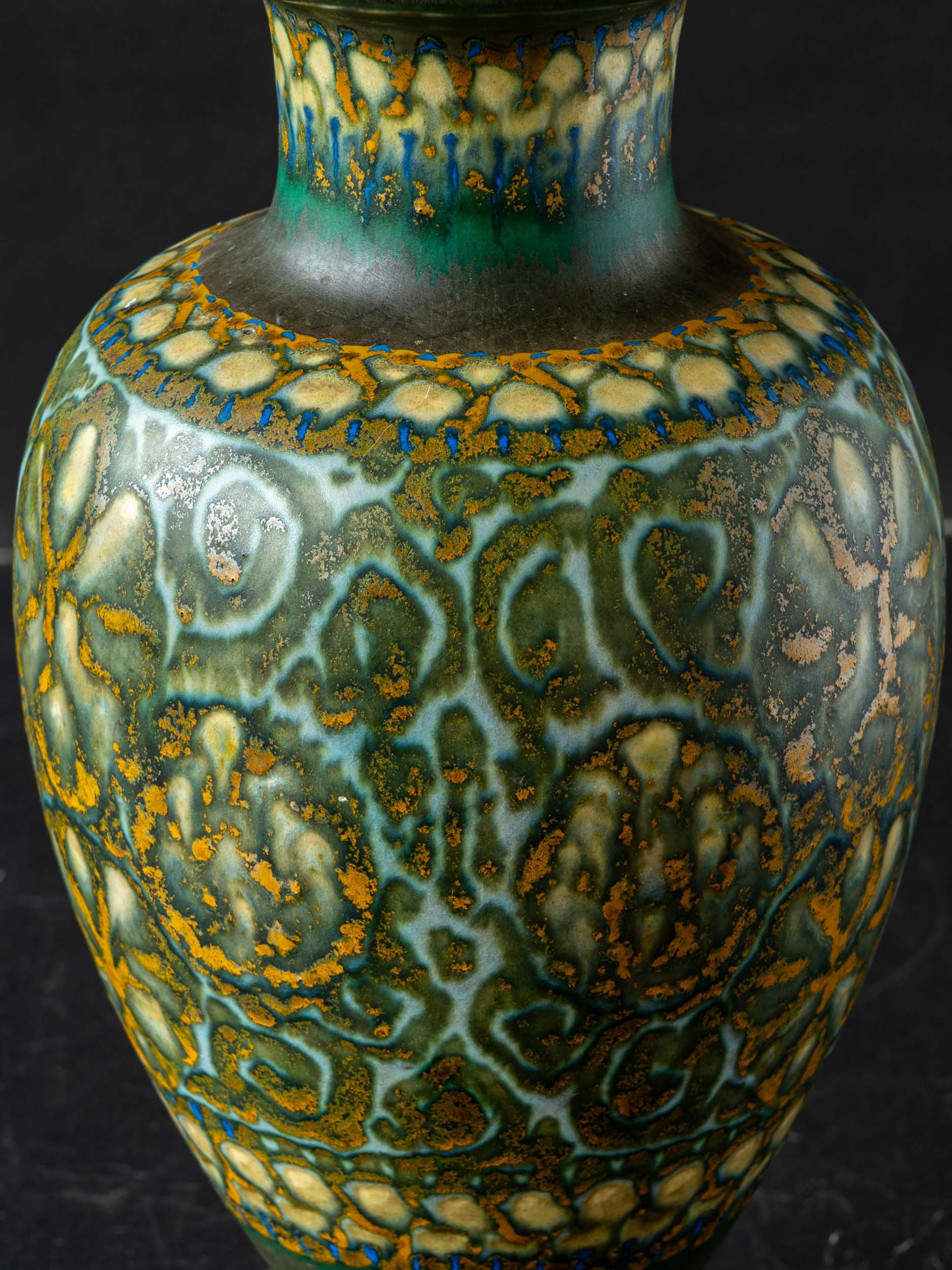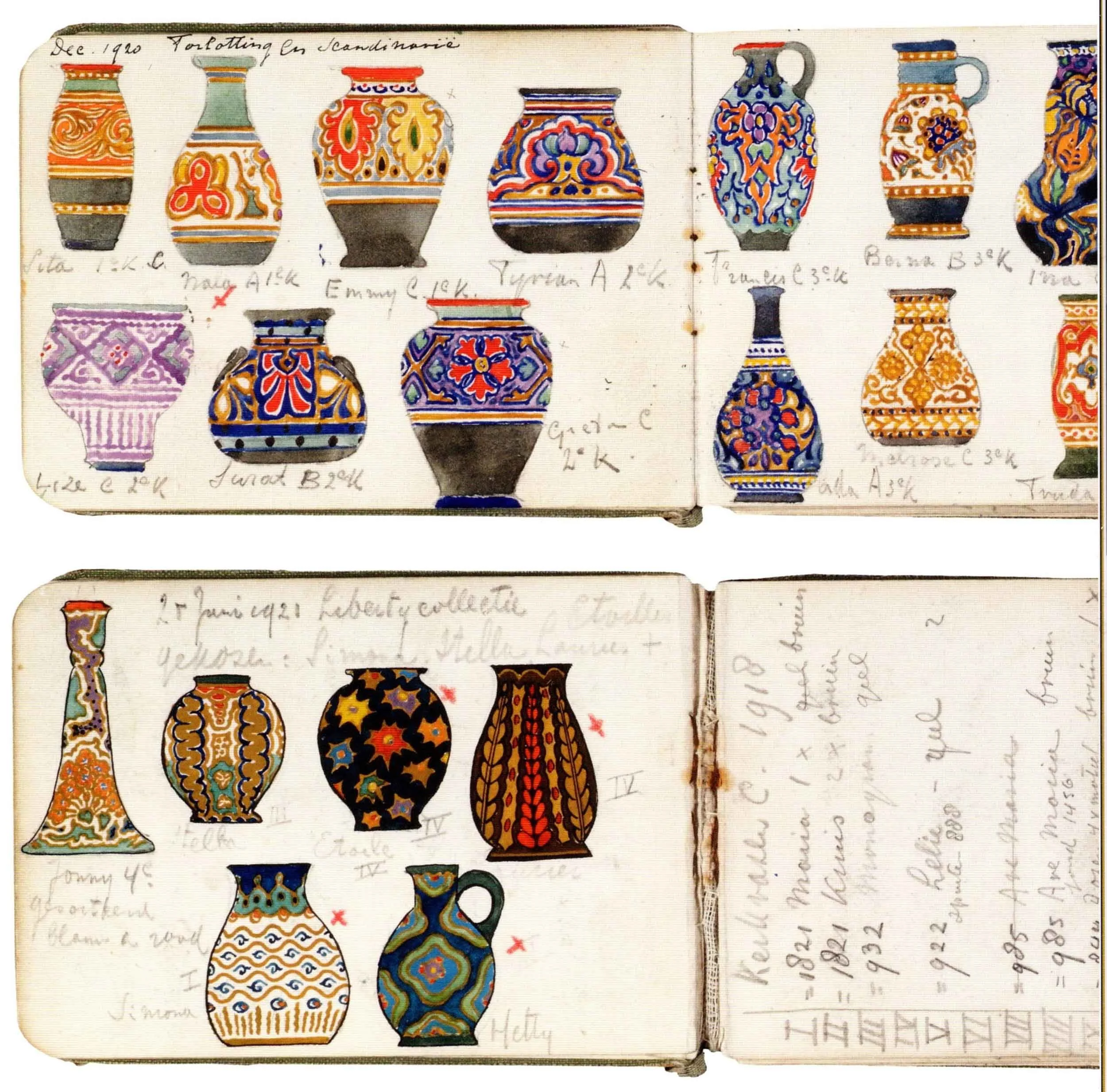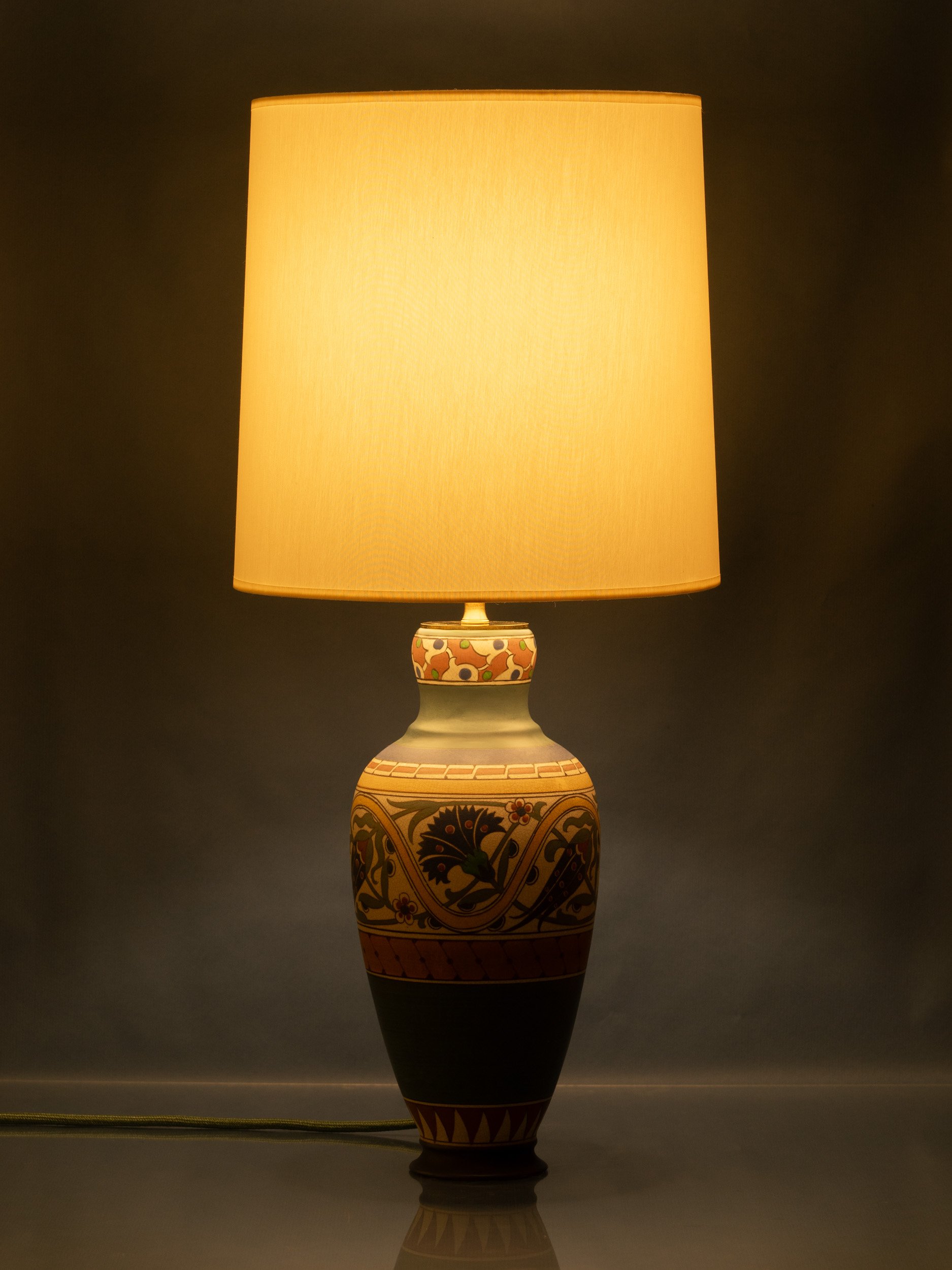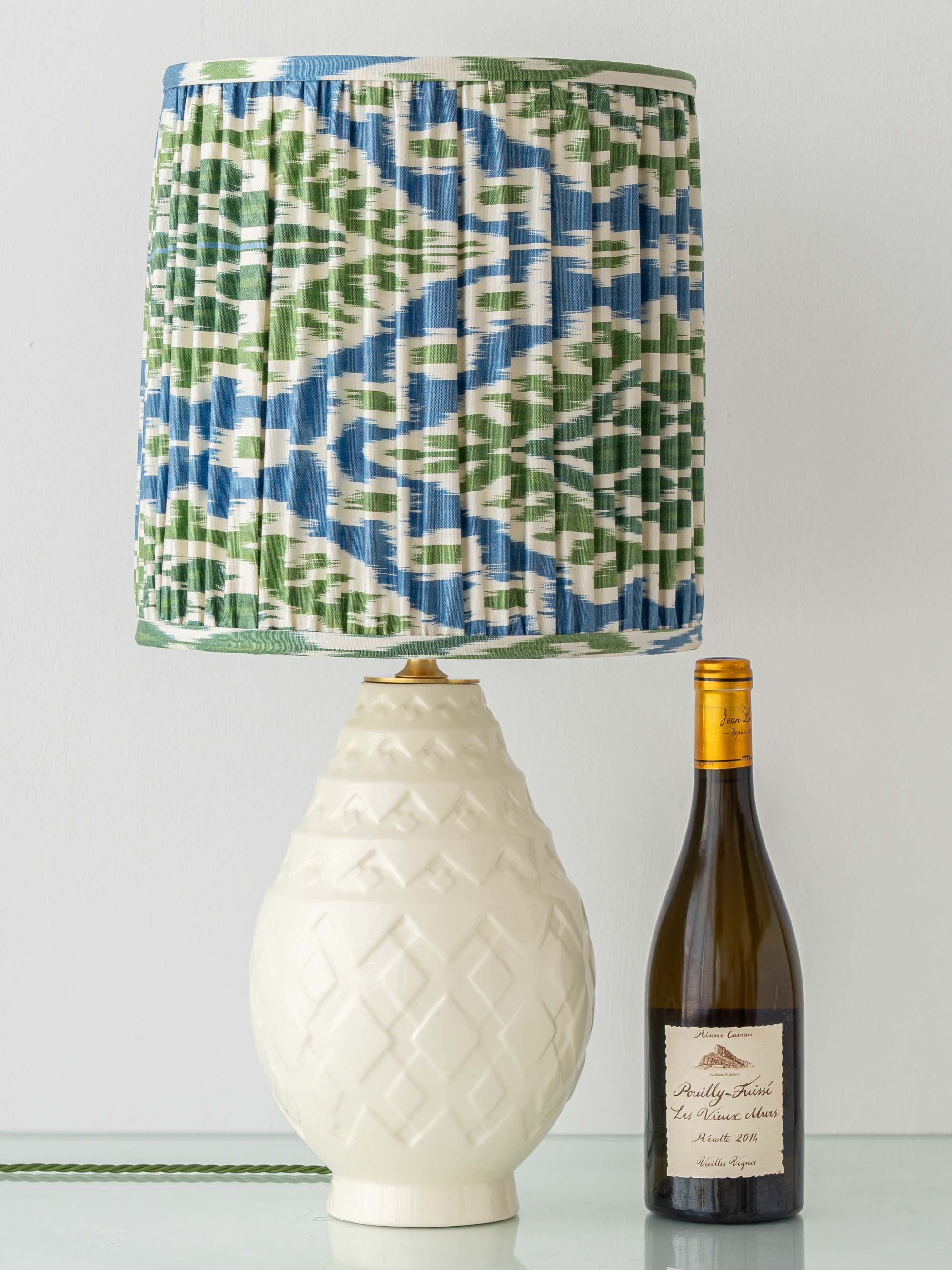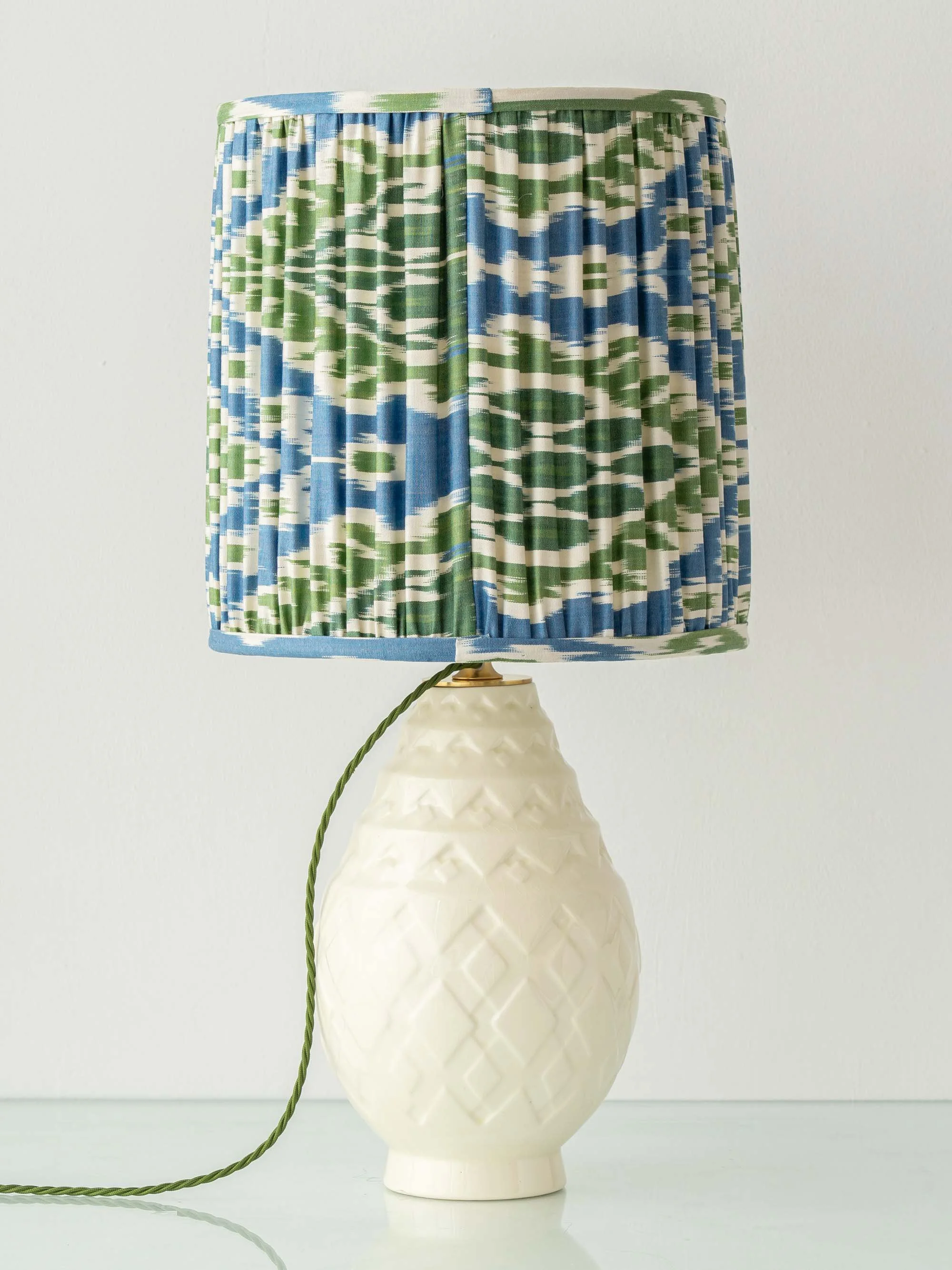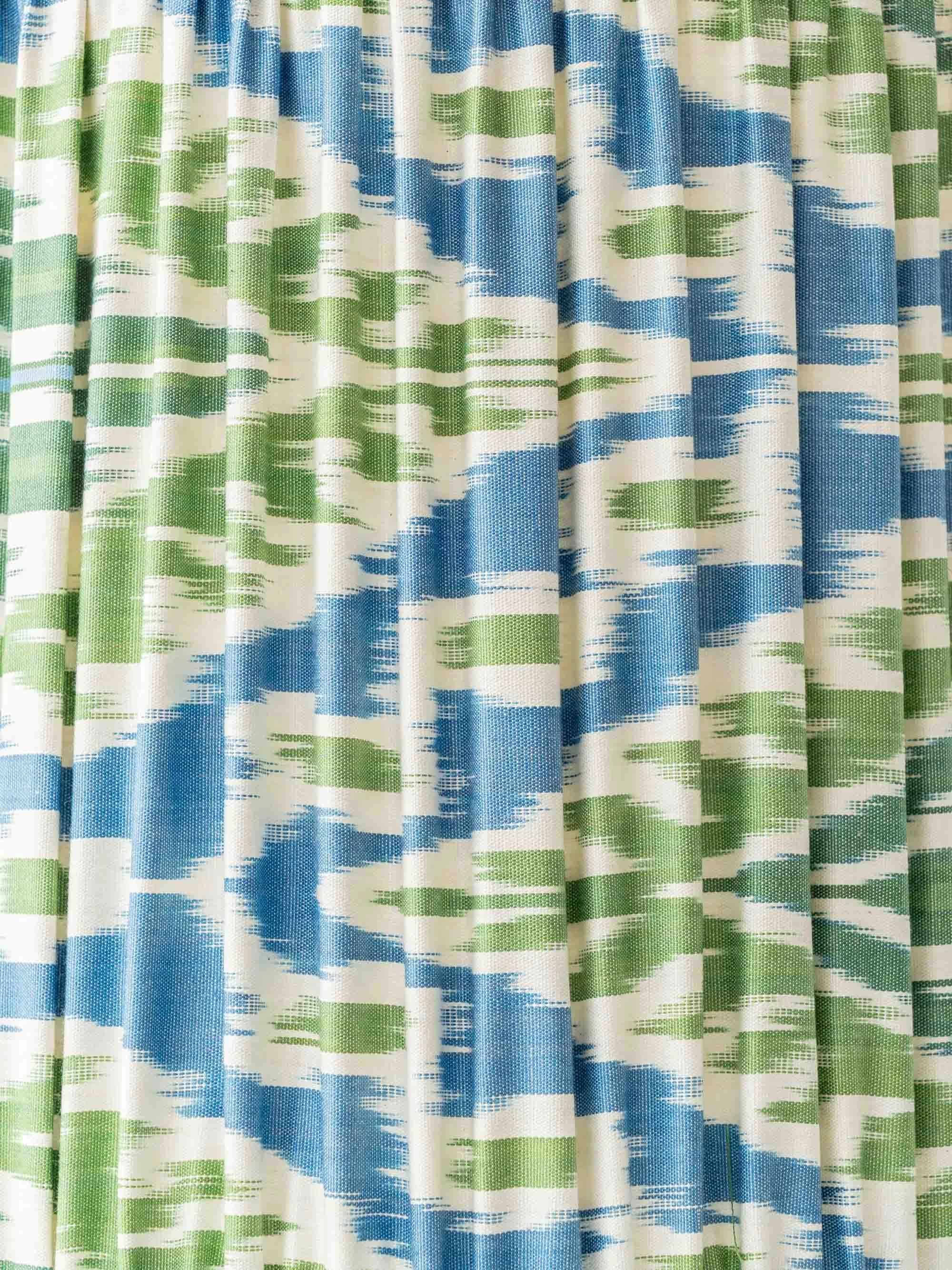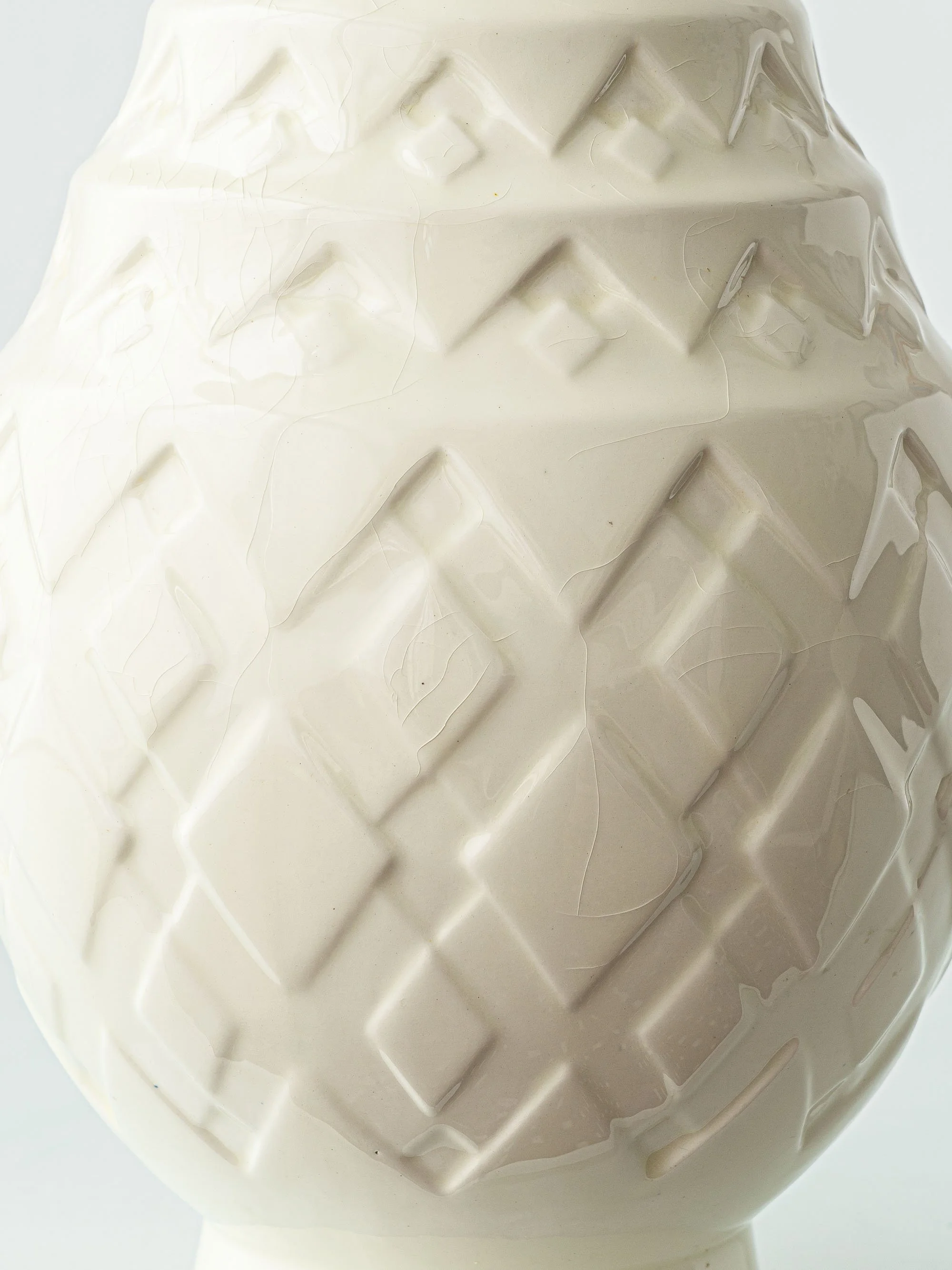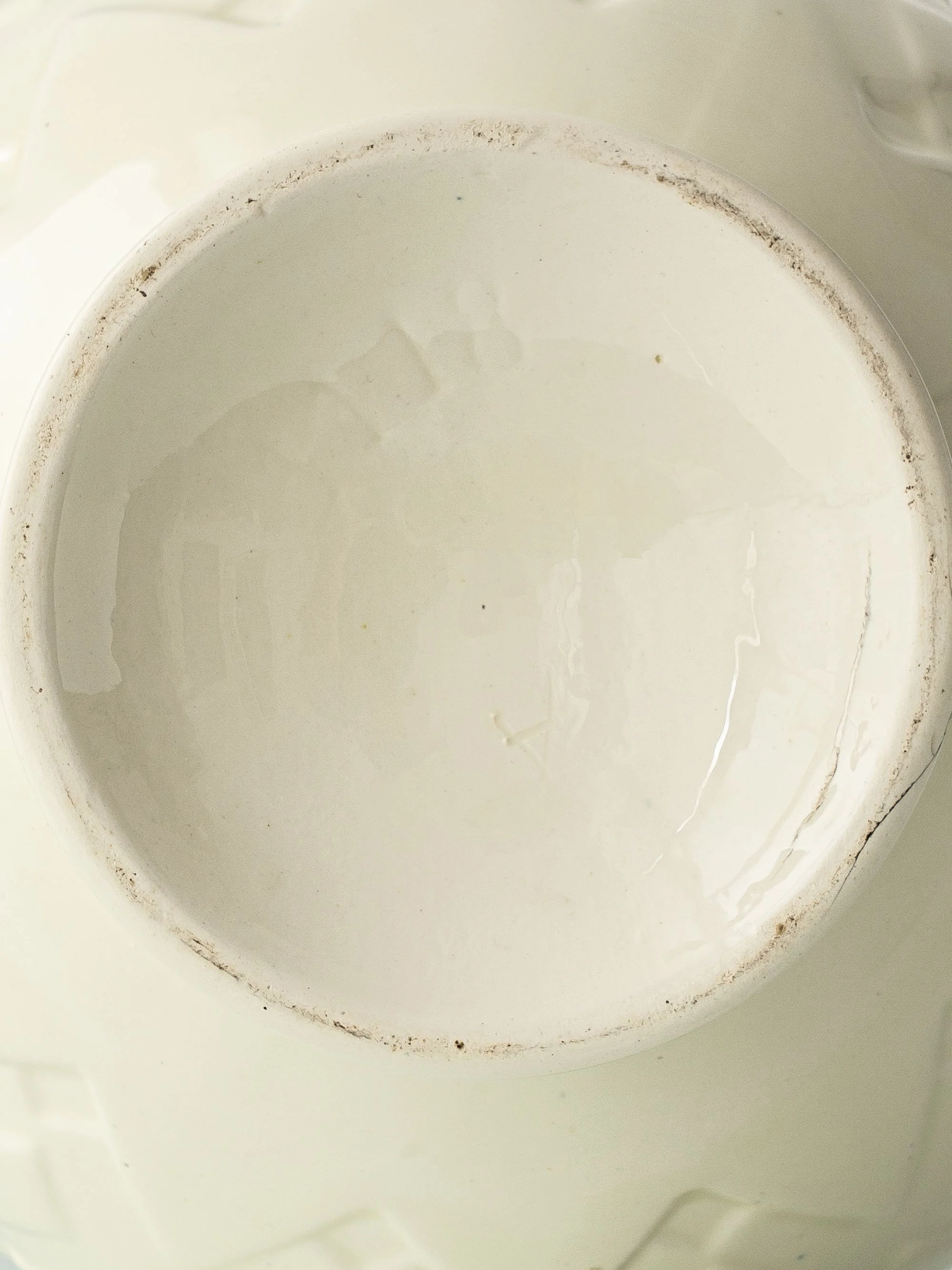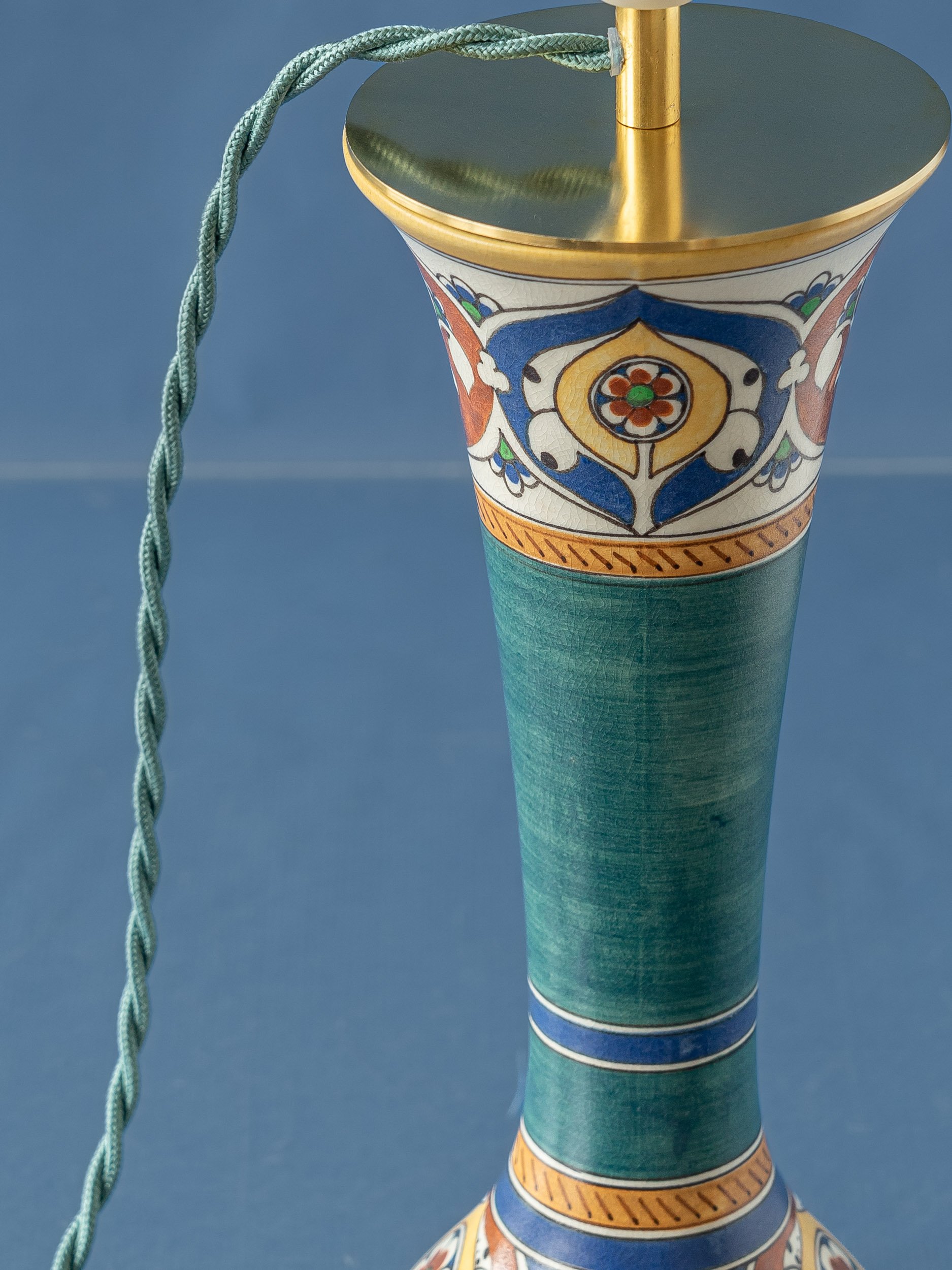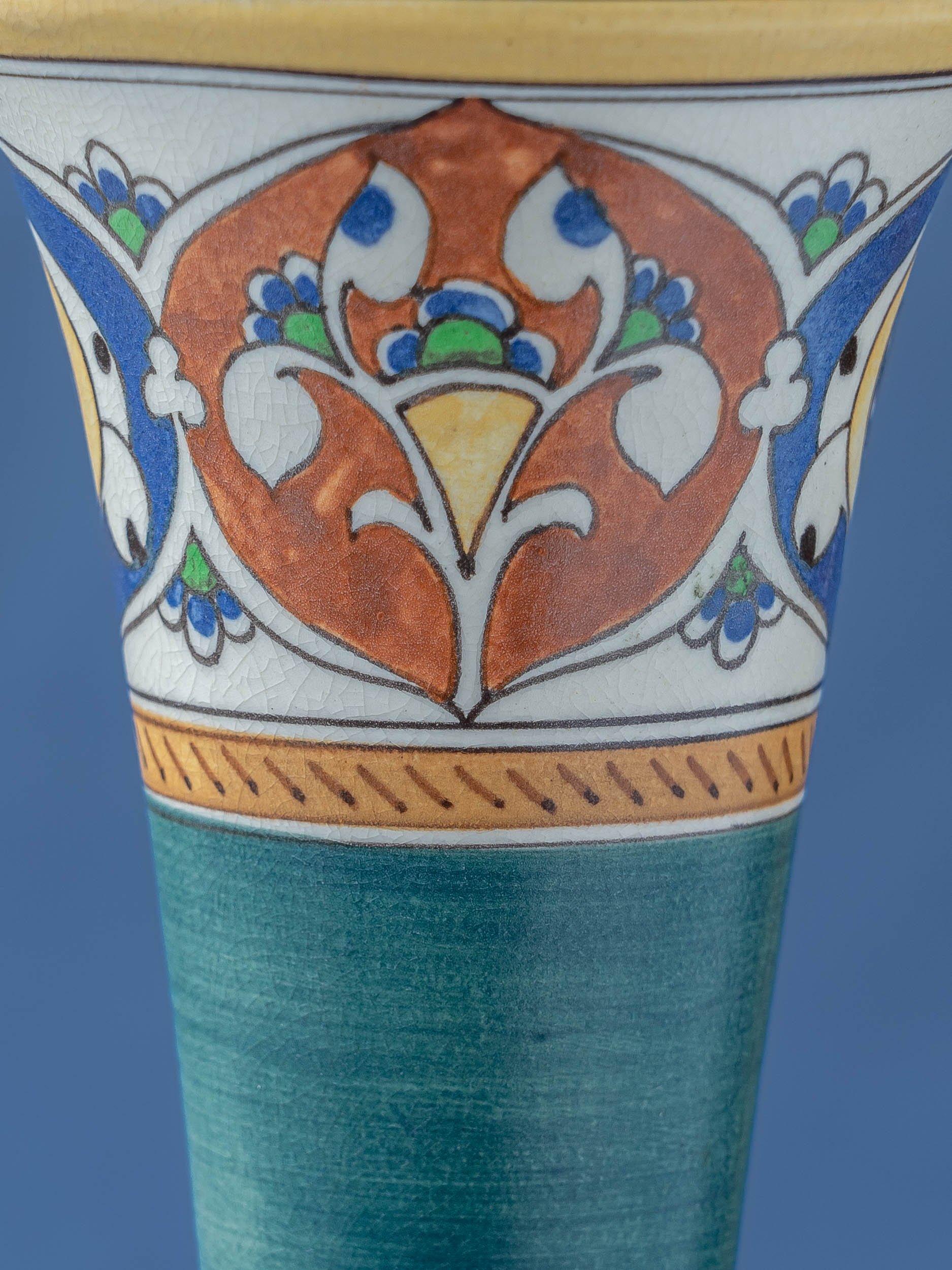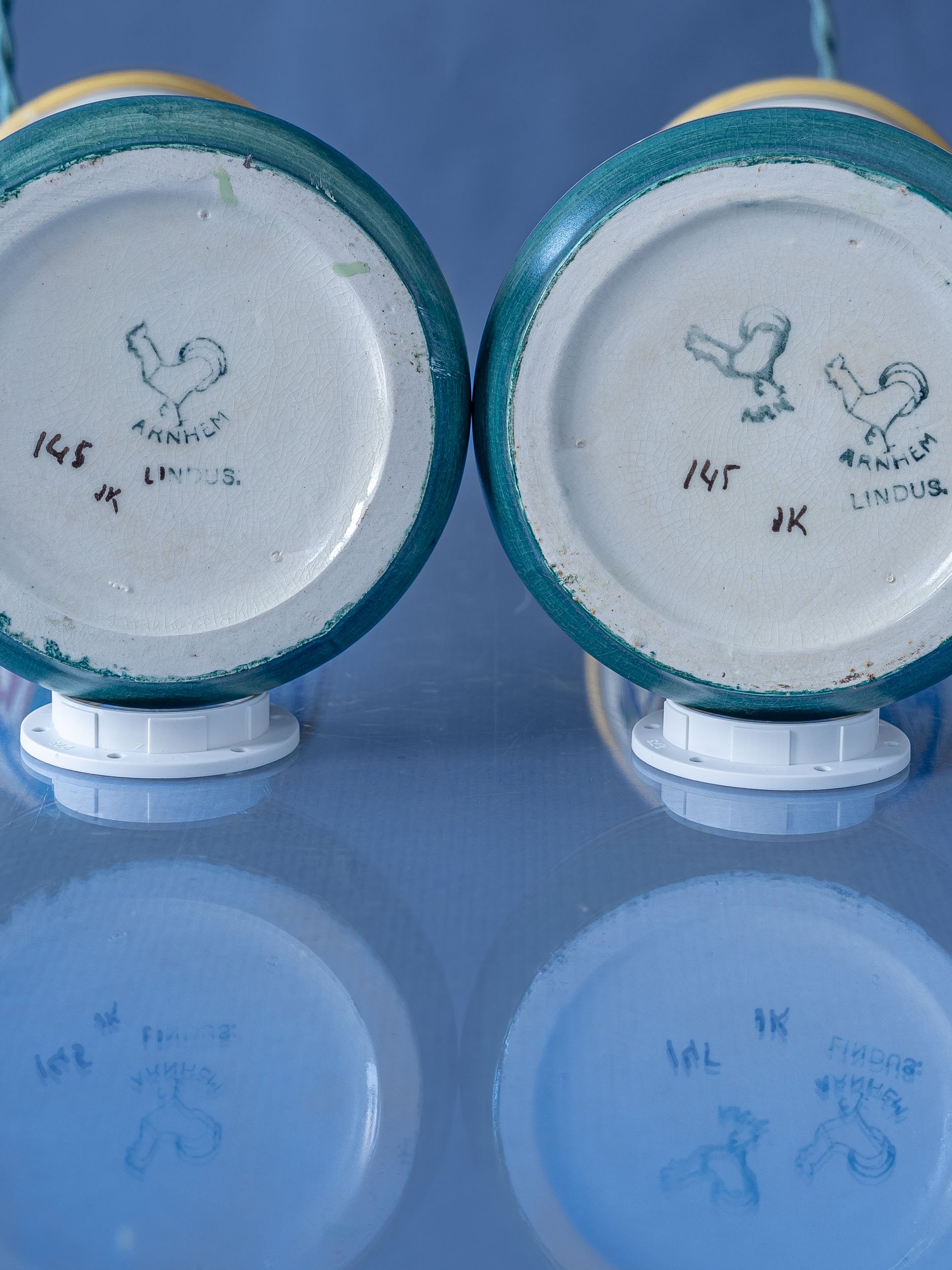Like Delftware, Gouda pottery is a style of Dutch applied art with a fascinating history. It gets its name simply because many factories working in this style were in Gouda, mainly due to the fact that the area was rich with clay. Many designers actually moved to Gouda to work in these factories. Gouda pottery, at its peak, was largely championed by the company Plateelbakkerij Zuid-Holland (1898-1965)—also known as Plazuid or PZH, Gouda Art Pottery Works—which was hugely popular from 1900 through the first half of the 20th century. Founded in 1898, they primarily made Art Nouveau and Jugendstil style pottery for their first twelve years, which was in vogue. However, they had the vision of introducing a new style to shake up the market and to satisfy the changing tastes of the public, which they achieved in 1909 with the introduction of a “matte-glaze” technique. This was a big shift for both PZH as well as Gouda pottery as a whole—in fact, Gouda pottery is often known for its appearance after 1909. Although it is a somewhat straightforward idea, matte-glaze was a definite shift in style and along with this PZH also introduced new shapes and patterns designed by Daniel Harkink who was inspired by ancient Persian/Iznik, Cypriot and Rhodian ceramics. These unique designs along with the matte-glaze resulted in the most iconic Gouda pottery.







